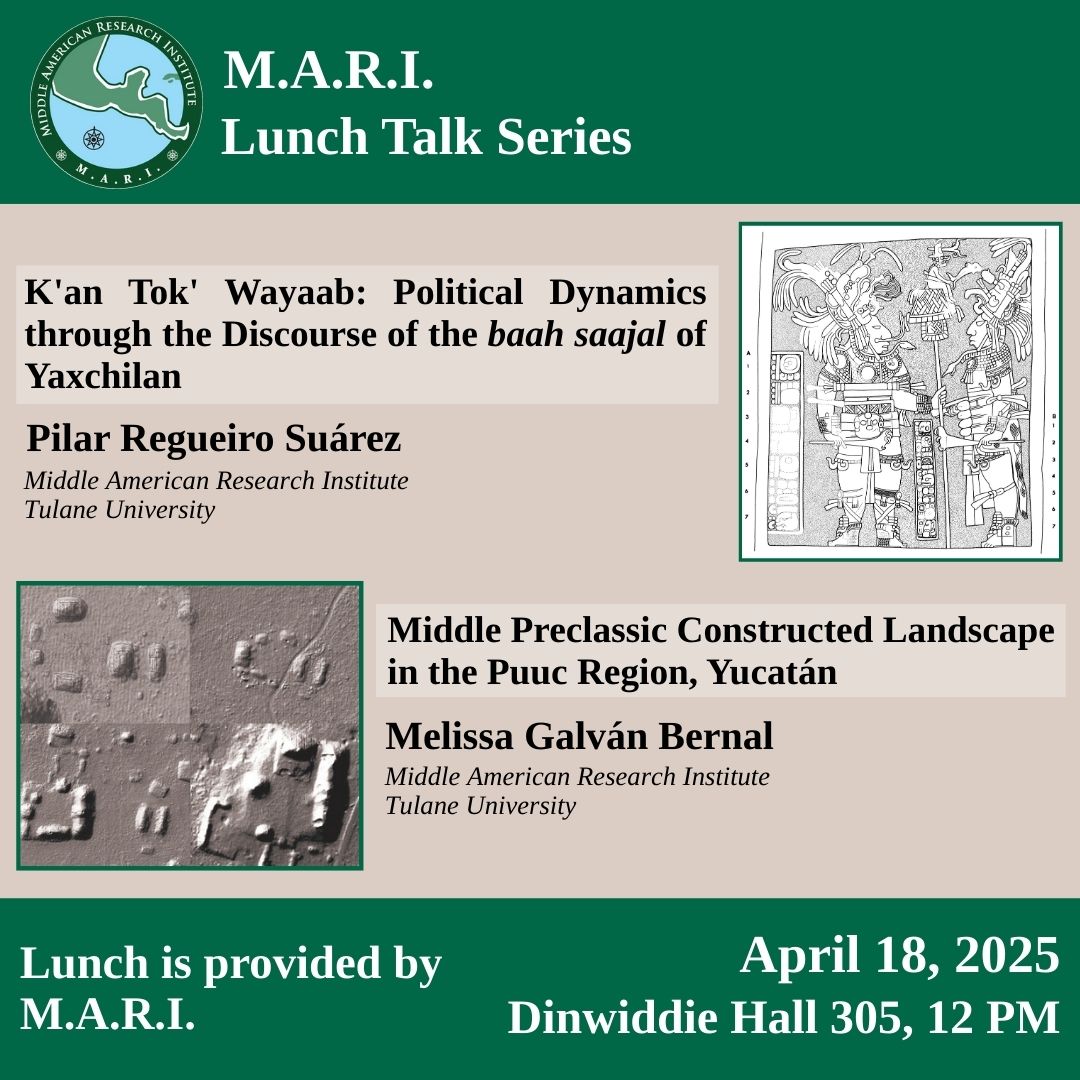Uptown Campus
Dinwiddie Hall
305

K'an Tok' Wayaab: Political dynamics through the discourse of the baah saajal of Yaxchilan - Pilar Regueiro Suárez
During the eighth century, the stone monuments of Yaxchilán and its surrounding area frequently recorded individuals holding the title of saajal, a role associated with leaders of corporate groups responsible for governing peripheral sites, overseeing military activities, and facilitating the circulation of goods. Among the saajals of Pa'chan lineage, only K'an Tok' Wayaab carried the title baah saajal, "principal saajal." This distinction allowed him to be depicted on the monuments of the city’s most significant structures, such as Structure 33, thereby emphasizing his rank to other influential groups. This presentation analyzes how K'an Tok' Wayaab asserted his political hierarchy through monumental discourse on Hieroglyphic Stairway 2 and, more importantly, establishing Structure 1 as a possible seat for his corporate group within Yaxchilan. This analysis will also enhance our understanding of the role of saajals in the political dynamics of Yaxchilan during the final years of this capital.
During the eighth century, the stone monuments of Yaxchilán and its surrounding area frequently recorded individuals holding the title of saajal, a role associated with leaders of corporate groups responsible for governing peripheral sites, overseeing military activities, and facilitating the circulation of goods. Among the saajals of Pa'chan lineage, only K'an Tok' Wayaab carried the title baah saajal, "principal saajal." This distinction allowed him to be depicted on the monuments of the city’s most significant structures, such as Structure 33, thereby emphasizing his rank to other influential groups. This presentation analyzes how K'an Tok' Wayaab asserted his political hierarchy through monumental discourse on Hieroglyphic Stairway 2 and, more importantly, establishing Structure 1 as a possible seat for his corporate group within Yaxchilan. This analysis will also enhance our understanding of the role of saajals in the political dynamics of Yaxchilan during the final years of this capital.
Middle Preclassic Constructed Landscape in the Puuc Region, Yucatán - Melissa Galván Bernal
In the last decade, LiDAR-supported surveys and excavations at different sites within the Puuc region in Yucatán revealed an intense and complex early occupation driven by highly productive soils and attested to by a dense network of monumental construction. Our ongoing research indicates that monumental construction began as early as the Middle Preclassic period and that these architectural spaces were the foci for some of the first public gatherings in the Puuc area. The similarity of these buildings suggests a regional tradition of civic architecture differing from monumental construction elsewhere in northern Yucatán; one possible interpretation is that they served as regional equivalents to E-groups elsewhere. Notably, several Middle Preclassic sites of different sizes have been identified. Even though we haven’t recognized a clear hierarchy of settlement organization during this time, this information leads us to question the social and political implications of the existence of these distinctions. In this paper, we present an archaeological overview of the Middle Preclassic constructed landscape, comprising sites within the Santa Elena Valley and the Bolonchen District. Our findings offer an opportunity to explore the early social and political networks of the Puuc region and its interaction with the remainder of the Northern Maya Lowlands.
